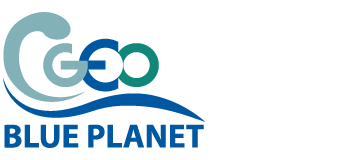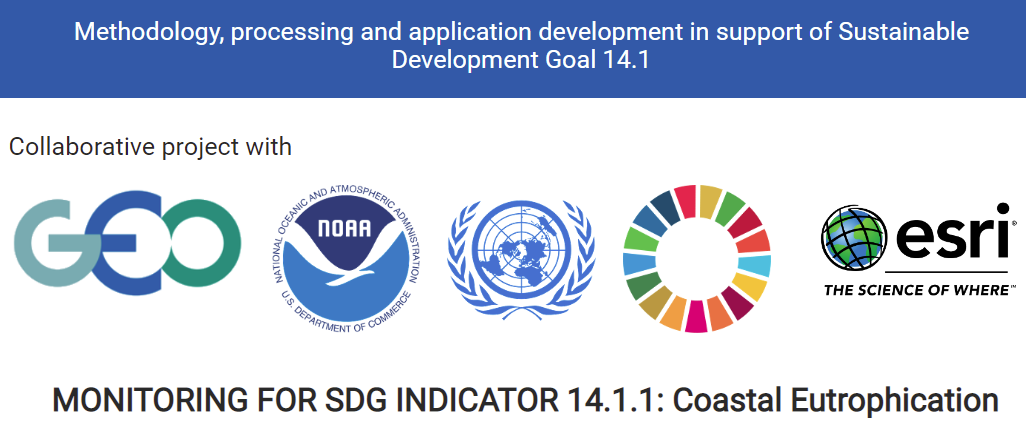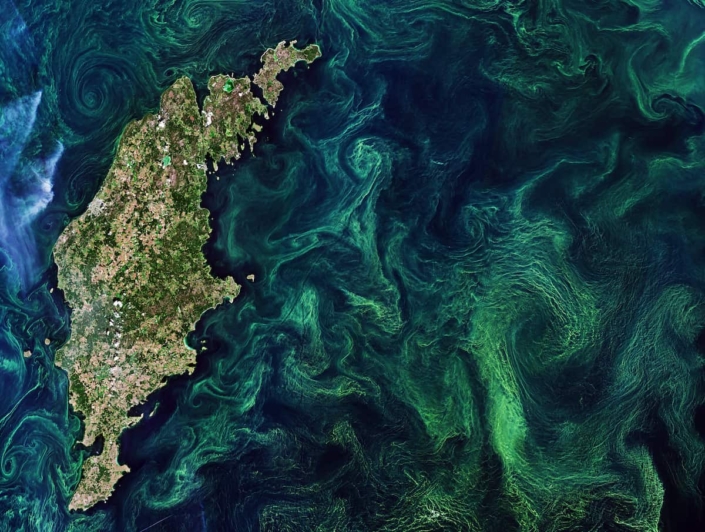Background and Rationale
This working group captures the evolution of the GEO BluePlanet Eutrophication Working Group before and beyond 2025 and integrates novel work with UNEP and ESRI on using Earth Observation for eutrophication drivers from source to sea. The purview of the GEO BluePlanet Eutrophication Working Group will encompass only the oceanic realm (e.g. large marine water bodies directly connected to open oceans) and partners may contribute from time to time.
Eutrophication, the process wherein water is enriched by nutrients, is particularly disruptive to the environment. This process can lead to increased growth, production and biomass of algae, changes in the balance of organisms and water quality degradation. This can lead to harmful algal blooms, hypoxia, fish kills, sea grass die off, loss of coral reef and nearshore hard bottom habitats and health hazards to swimmers and fishers. In both coastal and inland waters, excessive nutrient inputs come from anthropogenic sources including agricultural fertilizers, livestock waste and outlets from wastewater treatment plants. Eutrophication is ultimately undesirable as it can significantly degrade ecosystem health and/or the sustainable provision of goods and services.
There are several indicators which are used to assess the degree of eutrophication. These indicators can be measured directly by analyzing nutrients, or indirectly by analyzing processes that are caused by or are related to nutrient inputs (such as chlorophyll-a, water transparency and dissolved oxygen). Earth observation data derived from satellite imagery, remote sensing and in situ sources can be used to measure these proxy indicators. This data can also be used to facilitate the development of integrated systems capable of detecting and assessing the magnitude of eutrophication events. These systems can be employed by stakeholders to monitor and manage coastal and inland waters to reduce the impacts of eutrophication in vulnerable communities. Eutrophication proxy data derived from Earth Observation systems can also be used to impact national policy and decision making in response to climate change and progress towards sustainable development goals.
Drivers of coastal eutrophication include both natural physical and biogeochemical processes, but anthropogenic nutrient runoff poses a threat to marine ecosystems, yet might be controlled through implementation of policies and nature-based solutions. GEO Blue Planet focuses on activities that support UN SDG 14: Life Below Water, specifically Target 14.1.1a, which aims to measure the contribution to coastal eutrophication from countries and the state of coastal eutrophication.






